Launch and Recovery Systems
Two major systems used for launching fixed wing aircraft are the catapult and the ‘ski-jump’ or launching ramp. In either case the aircraft has to be designed for the type of launch, i.e. the structure and undercarriage has to be designed to withstand the dynamic loads generated by the particular launching system. Catapult launch systems do provide the flexibility of undertaking launch and recovery of fixed wing aircraft simultaneously, on angled deck carriers and for providing additional launch spots without any constraint on the configuration (all up weight) of the aircraft being launched in any condition. The implication is the additional weight, volume and energy requirements of the catapult launch system must be accommodated in the design.
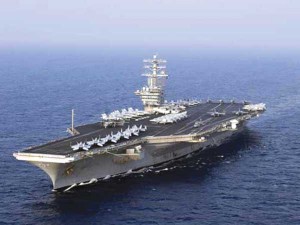 Invariably, installation of jet blast deflectors at the launch spots would also be necessary in order to protect the aircraft ed or waiting behind. Catapults are fitted on US Navy carriers and on the French carrier, Charles de Gaulle. These are operated by steam, which is readily available on conventional and nuclear powered steam turbine propelled ships. Installation of dedicated steam generation equipment would, however be necessary in case steam catapults are to be installed on carriers propelled by gas turbines. Available steam catapults can launch aircraft weighing up to 32 tonne.
Invariably, installation of jet blast deflectors at the launch spots would also be necessary in order to protect the aircraft ed or waiting behind. Catapults are fitted on US Navy carriers and on the French carrier, Charles de Gaulle. These are operated by steam, which is readily available on conventional and nuclear powered steam turbine propelled ships. Installation of dedicated steam generation equipment would, however be necessary in case steam catapults are to be installed on carriers propelled by gas turbines. Available steam catapults can launch aircraft weighing up to 32 tonne.
In order to limit the acceleration rates of lighter aircraft, the rate of opening of the ‘launch valves’ is modulated, but there is a limit below which lighter aircraft cannot be launched. The Electro-Magnetic Aircraft Launch System (EMALS) developed by the United States for the new design CVN-21 class carrier, dispenses with the need for steam and instead uses linear induction motor technology, which removes the constraint on aircraft weight.
However, the electrical power requirements are greatly increased by the installation of EMALS, which needs to be catered for in the design of the ship, as is being done on the CVN -21 class. Trials of EMALS are in progress at Lakehurst NJ USA. Four EMALS are planned to be installed on CVN- 78 at a ‘latest’ reported cost of 1292.6 million USD.
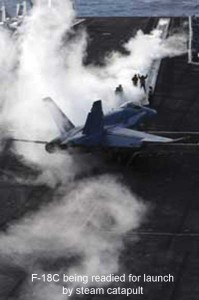 The ski-jump (or trampoline in Russian parlance) is a British invention, which imparts dynamic lift to the aircraft, thereby allowing an increase in performance/endurance of ‘short take-off’ aircraft, as embarked on INS Viraat, and on the carriers in service with European (except French) and the Russian Navy.
The ski-jump (or trampoline in Russian parlance) is a British invention, which imparts dynamic lift to the aircraft, thereby allowing an increase in performance/endurance of ‘short take-off’ aircraft, as embarked on INS Viraat, and on the carriers in service with European (except French) and the Russian Navy.
The ‘Queen Elizabeth II’ class carriers being built for the British Royal Navy, the IAC-1, and INS Vikramaditya (ex-Admiral Gorshkov) will also have the ski-jump. The Mig 29K aircraft, planned to be operated from IAC-1 and INS Vikramaditya, are designed for ski-jump assisted Short Take Off But Arrested Landing (STOBAR) . Interestingly, while the short take-off vertical landing (STOVL) version of the Lockheed Martin Lightning II Joint Strike Fighter, the F35B, planned for operation on the CVF is ski- jump compatible, the CVF is also being ‘fitted for but not with’ catapults and arrester gear, so as to retain the option to operate CATOBAR (catapult assisted take-off but arrested landing) aircraft in the future.
Fixed wing aircraft, other than aircraft designed for vertical landing are brought to a stop within a short distance after landing on the deck by arrester gear. Presently used designs use wire ropes rigged athwartship at the aft end of the landing runway, connected to a hydraulic ram through cables and pulleys. The aircraft engages one of the wires with its tail hook and is brought to rest in a short distance. The gear is designed for a rather limited range of aircraft weights.
Also read: How India can acquire great power status?
A new design Advanced Arresting Gear (AAG) being developed for the US CVN-21 and planned for retrofitting on all Nimitz class carriers, replaces the ram with energy absorbing water turbines with an electromagnetic braking and rewind system (induction motor), which enables fine control of the arresting forces. The design also incorporates a lighter synthetic cable instead of the existing wire ropes.
The new design catapult and arresting gear provide finer control of the accelerating and decelerating forces during take off and landing, thereby enabling reduction of impulse loads during these operations, with consequent improvement in fatigue life of the aircraft structures.
Turnround Time
The rate at which aircraft are re-fuelled and re-equipped with armaments, i.e. bombs, rockets, missiles, gun ammunition, and readied for re-launch on completion of a sortie, has a marked effect on sortie generation rate. Whereas refueling arrangements at various locations are relatively easy to provide, safety requirements, particularly because of the sensitivity of the air weapons to detonation, dictate that armaments are taken out of the magazines shortly prior to loading on the aircraft and are not kept in exposed locations for long duration.
The magazines are several decks below the flight deck, and although existing carriers are equipped with ammunition lifts, these are cable operated and useful only for vertical movements. Horizontal movement has to be effected manually, which is manpower intensive and time consuming. Moreover, the actual loading of bombs and missiles onto the aircraft is a precise operation, which is also being done manually at present. New technologies are under development to mitigate this problem by employing sophisticated automation.
For the CVN-21, linear induction motor based weapons elevators are under development with a lift capacity of 22 tonne. These would transport bombs and missiles to a weapons area just below the flight deck, where ‘aircraft size loads’ would be prepared. These would be brought up to the flight deck when required, using short distance ‘express’ elevators. For assisting movement of heavy loads on deck, a derivative of the Compact Agile Material Mover (CAMM) is being developed. The CAMM, employing Human Amplification Technology (HAT), a spin-off of the nuclear industry can carry 5 tonne loads and requires a single operator.
Movement is effected by a device akin to a powered furniture castor wheel, and inertia and contact forces are fed back to the operator’s single lawnmower handle-like operating device, which is fixed to the vehicle.
The vehicle can also hold its position on a 30deg. slope. HAT technology is also used to assist handling of armaments. A powered lifting arm responds directly to push, pull and twist forces applied by human hand to the load carrying head and feeds back resistance and contact forces. Positioning up to sub-millimeter accuracy is reported. In the case of the CVF, automated all-electric commercial warehousing technology has been adapted to develop the ‘Highly Mechanised Weapon Handling System’ (HMWHS), which is expected to reduce manpower requirements and speed up the movement.Designers of new carriers focus on the optimal use of upper deck ‘real estate’ to minimize the turn round time and to improve ergonomics of flight deck operations. Differing solutions have emerged in the case of the CVN-21 and the CVF. The island of the CVN-21 is smaller than that of the Nimitz class, and is positioned further aft.The CVF, on the other hand, will have two islands, the forward island being used for ship operations and the aft for air operations, the arrangement also providing dispersion of the ‘sponson-installed’ gas turbines In both cases the lifts are positioned on the deck edge, to avoid interference with air operations.In order to minimize the need to move aircraft on deck for their turn round, a ‘pit stop’ arrangement is provided, wherein all services are located grouped around the spots where aircraft are positioned for turn round, thereby reducing the time required for this evolution. It has been stated that simpler deck handling is the single biggest factor in improving sortie rates.
Structures
Structural design features of aircraft carriers need to ensure strength, stability and survivability with particular attention to structure in the vicinity of large openings necessary for aircraft lifts. An important task to be addressed by the designer is to ensure stability, with margin for future growth, while, at the same time, ensuring that ship motions are restricted. Structural protection of mission critical spaces and ammunition magazines is receiving attention in the design of CVN-21, with reports indicating that Dynamic Armour Protection System (DAPS), similar in principle to electromagnetic reactive armour used for land vehicles, is being incorporated.
Carrier Propulsion
Aircraft carriers were traditionally propelled by steam turbines. The steam, produced by fossil fuel fired boilers, being used for catapult operation as well. The Indian Navy’s existing carrier, INS Viraat, is steam propelled, as is the INS Vikramaditya, presently undergoing repair and conversion in Russia. The first nuclear powered aircraft carrier, USS Enterprise, was commissioned in 1961, and this mode of propulsion has been retained for all the ‘super’ aircraft carriers of the US Navy, (so called because of their large displacement of around 100,000 tonne). The nuclear steam plant of the Nimitz class produces 260,000 bhp (194 MW) and propels the ship at 30+ knots.
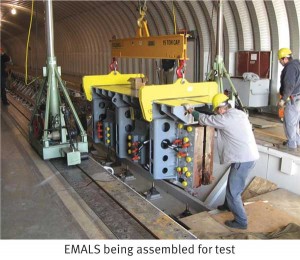 The high cost, (first and through life) of nuclear propulsion is offset by the ability of these carriers to embark greatly increased quantities of aviation fuel and ordnance for their large air wings in the internal volumes, that would have otherwise been utilized for the ships’ fuel, thereby increasing their operational endurance. The reactors planned for the CVN-21 are of a new design, with lower manning and maintenance requirements, with no refueling required for the life of the ship. Nuclear propulsion is not however, restricted to large carriers only. The French Navy’s Charles de Gaulle displacing 40,600 tonne has a compact nuclear steam plant capable of propelling the ship at 27 knots.
The high cost, (first and through life) of nuclear propulsion is offset by the ability of these carriers to embark greatly increased quantities of aviation fuel and ordnance for their large air wings in the internal volumes, that would have otherwise been utilized for the ships’ fuel, thereby increasing their operational endurance. The reactors planned for the CVN-21 are of a new design, with lower manning and maintenance requirements, with no refueling required for the life of the ship. Nuclear propulsion is not however, restricted to large carriers only. The French Navy’s Charles de Gaulle displacing 40,600 tonne has a compact nuclear steam plant capable of propelling the ship at 27 knots.
Nuclear propulsion plants do not require trunks to be provided for supplying combustion air to boilers, nor is there any requirement for an exhaust funnel; these would otherwise intrude into deck space within the ship, particularly in the hangar and flight deck. Clearly therefore, should budgetary support and availability of technology not be an issue, taking into consideration that technological advances have reduced the operating complexity and costs and have also enhanced the reactor core life, nuclear propulsion remains a serious choice for aircraft carrier propulsion.
The high maintenance loads associated with the operation of conventional, fossil fuel fired steam plants, and their relatively low cycle efficiency, led to the consideration of alternate means of propulsion for aircraft carriers by navies who did not or could not consider nuclear propulsion as an alternative. The aero derived marinised gas turbine, whose design has matured over the years, offers a compact high power source, with higher fuel efficiency than conventional steam plants. The marine gas turbine made its debut for aircraft carrier propulsion on the British Invincible Class carriers, the lead ship of which commissioned in 1980. This mode of propulsion has since been selected by the has been selected by the Italian Navy for its carriers Giuseppe Garibaldi which commissioned in Sep 85 and for the Cavour, (in combination with a diesel electric plant) which commissioned in Mar 2008, by the Spanish Navy for the Principe de Asturias, and by the Thai navy ( in combination with diesel engines) for the Chakri Naruebet. India’s IAC-1 will be powered by 4 General Electric LM 2500 Gas Turbines, sourced from Hindustan Aeronautics Ltd. These will drive the 40,000 tonne ship at a maximum speed of knots.




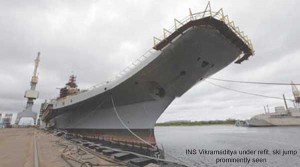
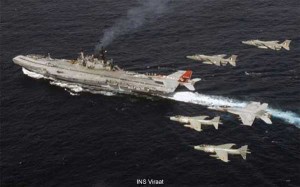
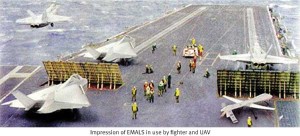

Hanji sir,I am one of your ex-navy LME.Served on board INS kirpan and Udaygiri.If you receive this message pls.contact me.I am a Canadian citizen nowadays.Thanks lot.Dilbagh singh randhawa.1974-1984.